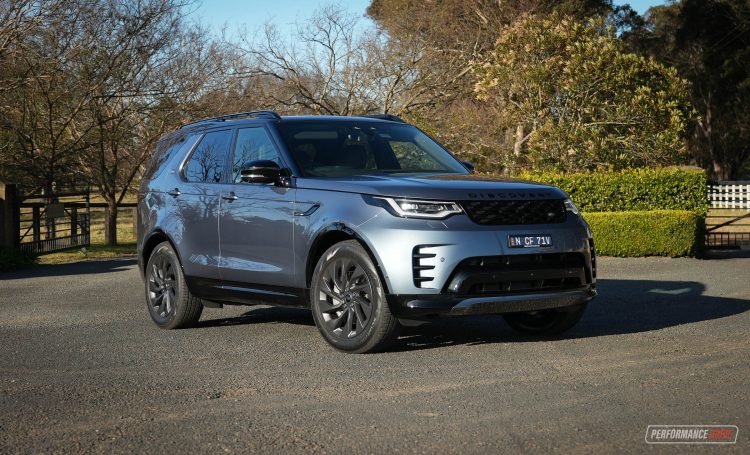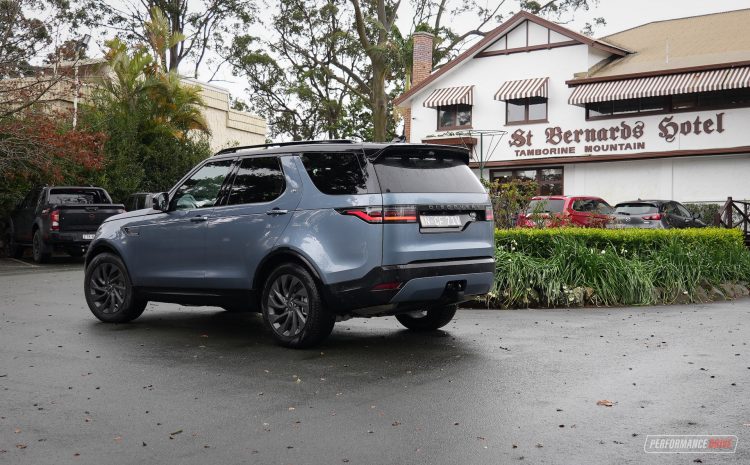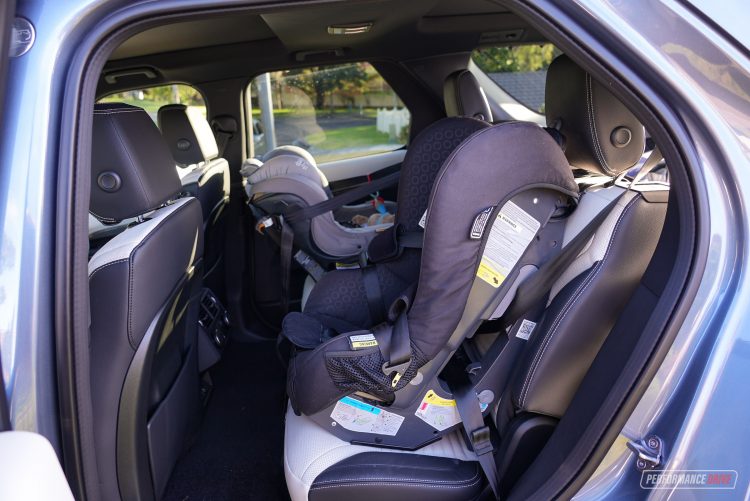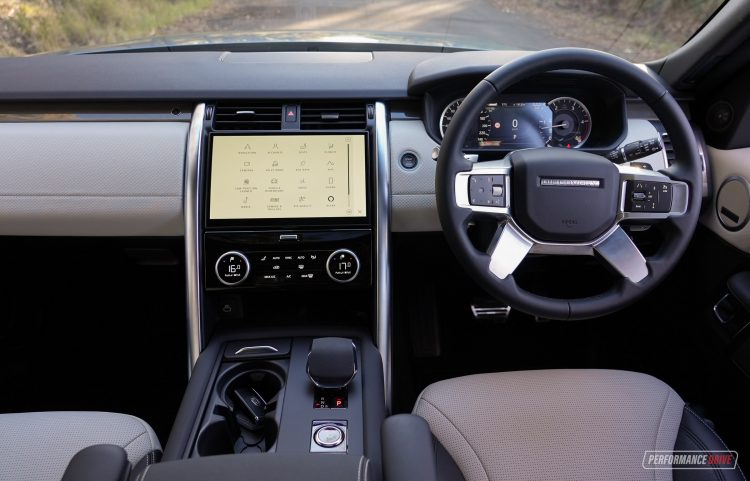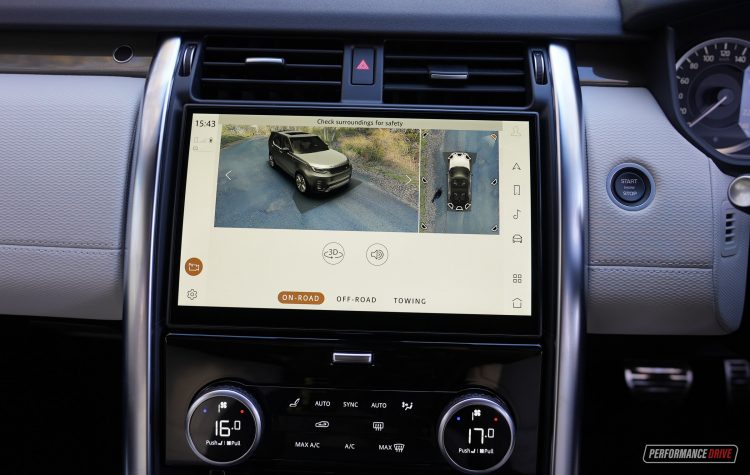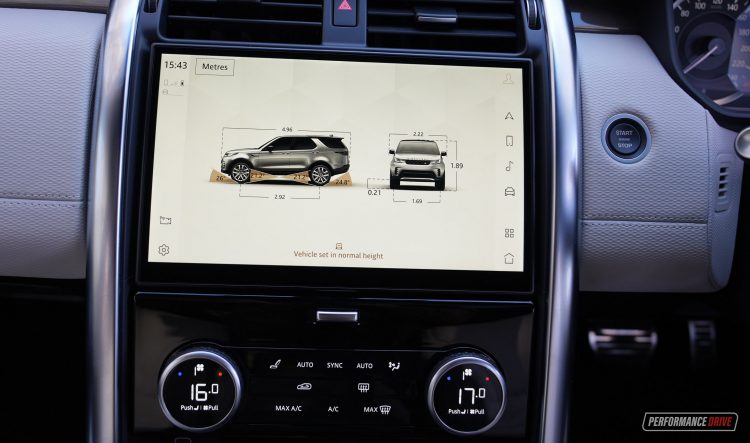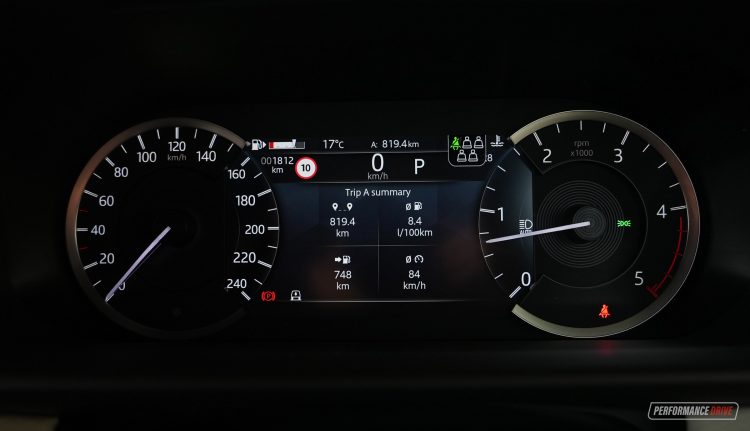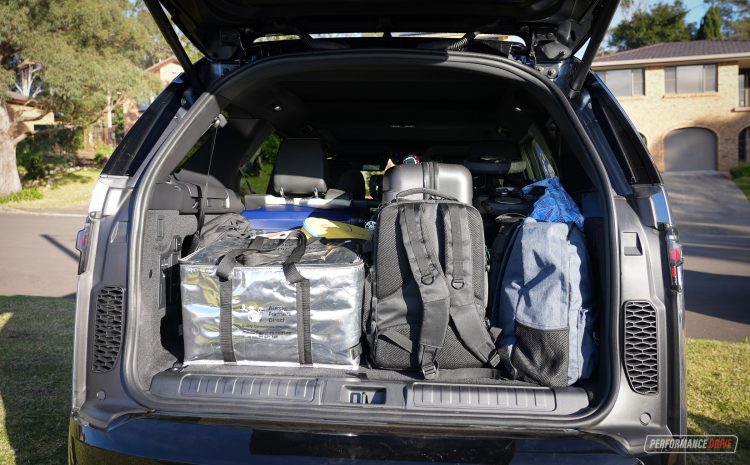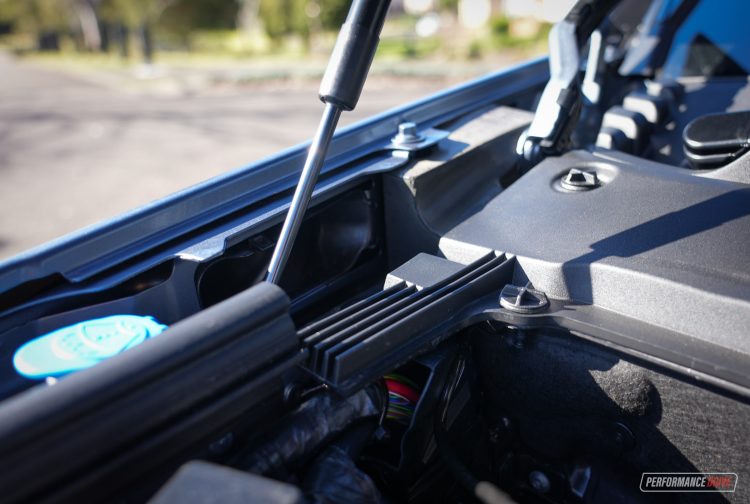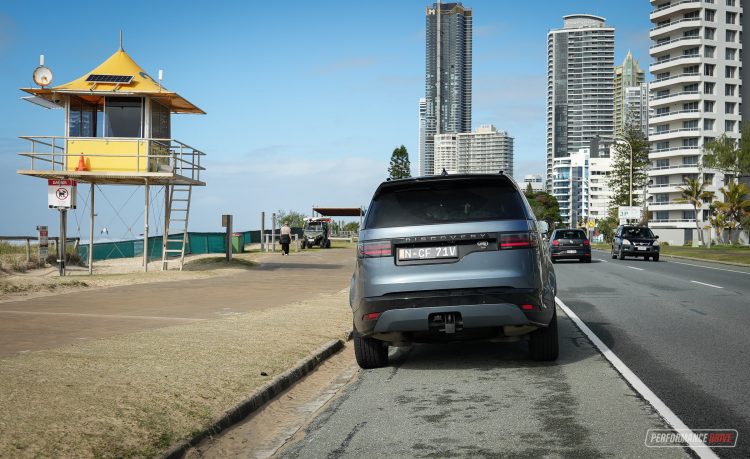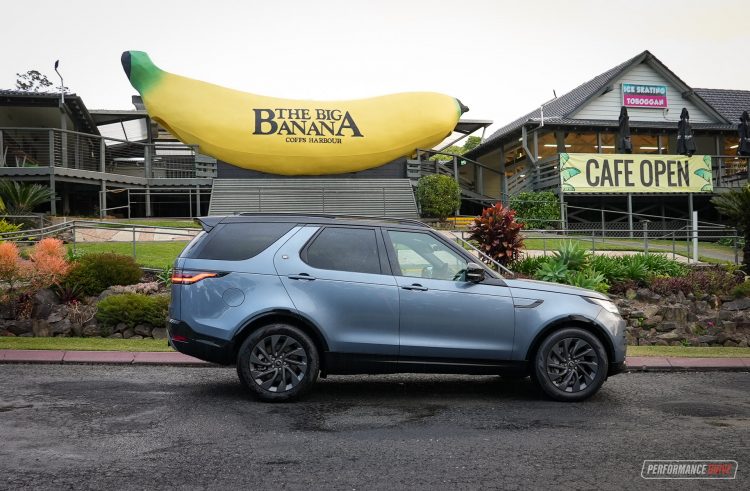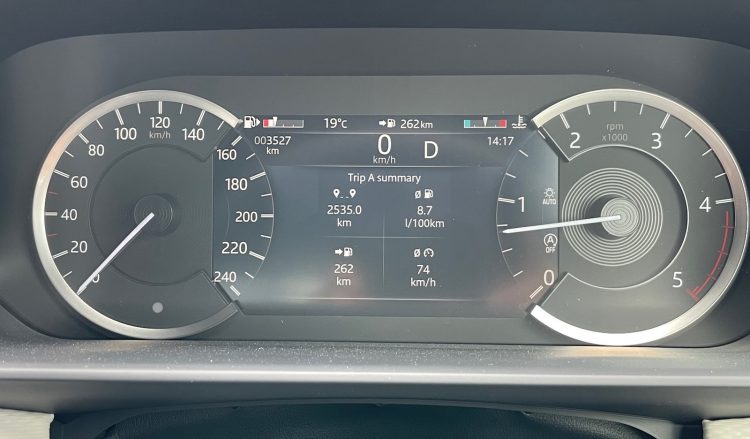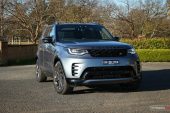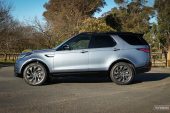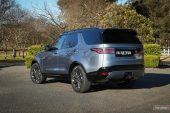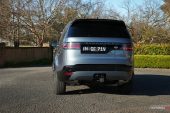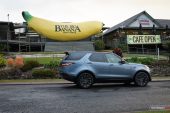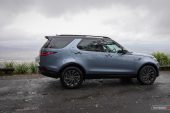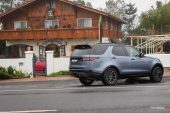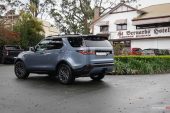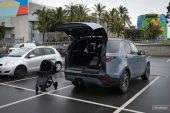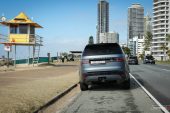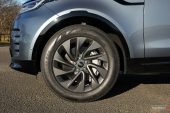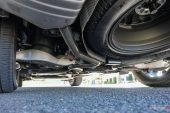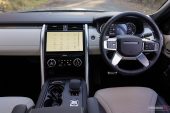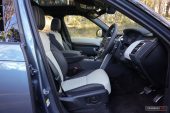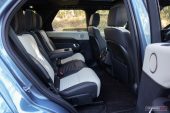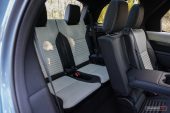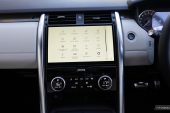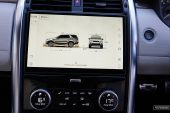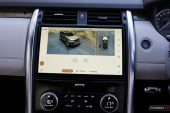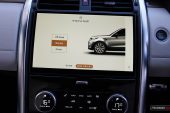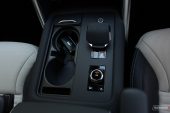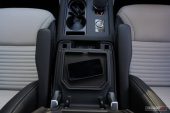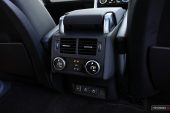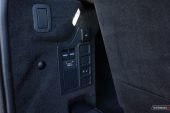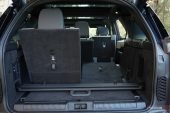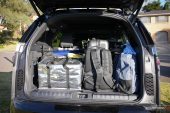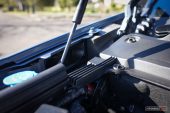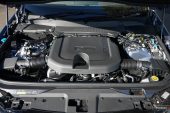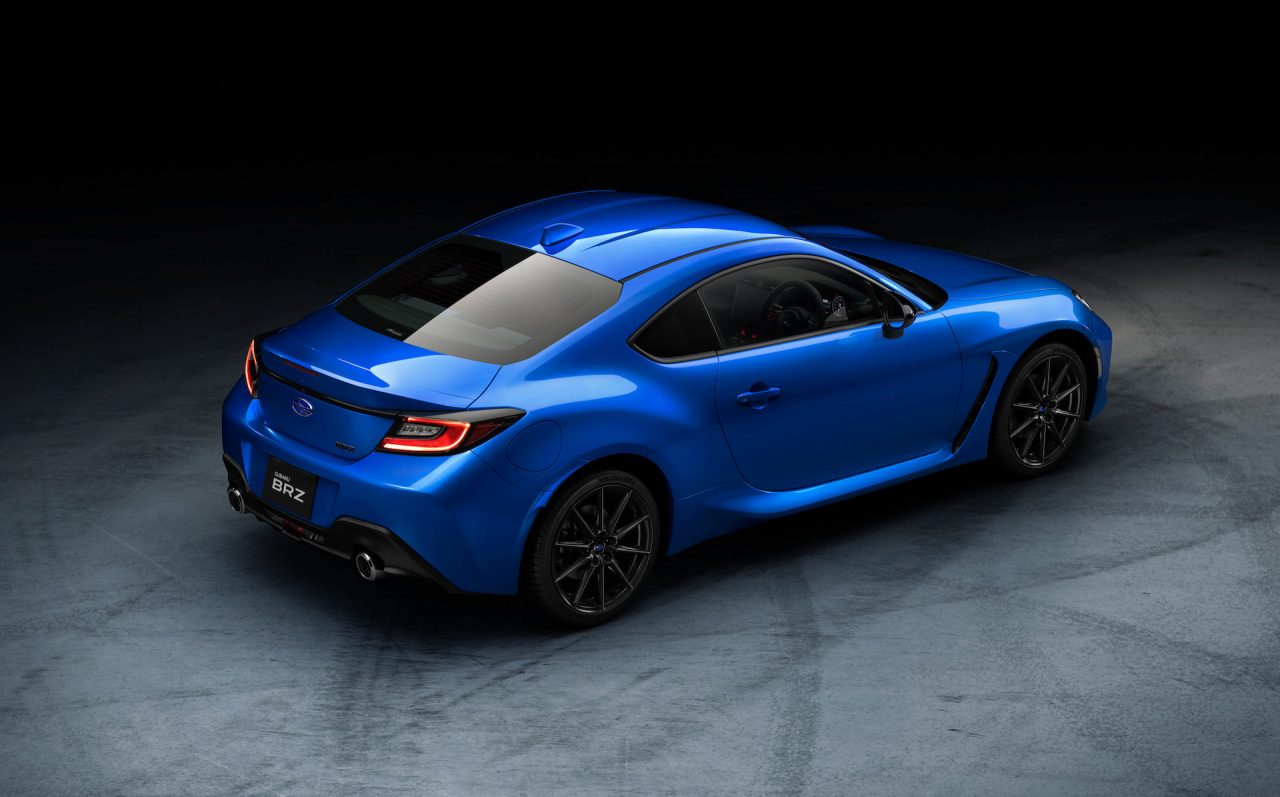The ingredients and mechanical makeup of the 2023 Land Rover Discovery D300 seem like they were purpose-built for touring Australia, through thick and thin, changeable conditions and across varied surfaces. And all in premium comfort and useable practicality.
The latest Discovery range switches over to Jaguar Land Rover’s latest inline-six engines, in P360 and D300 petrol and diesel forms. Four-cylinder options have been dropped completely (at least in Australia). Although Land Rover did have plans to launch an exciting SVX supercharged V8 variant a few year ago, that project was shelved and now the petrol range tops out with a 265kW/500Nm 3.0-litre twin-turbo (including e-turbo) inline-six petrol.
Here we’re sampling the cream of the crop in our opinion, the D300, in R-Dynamic S trim grade. It features a smooth yet forceful 3.0-litre turbo-diesel inline-six producing 221kW and 650Nm. Somewhat disappointingly, the D300 replaces the old Sd6 3.0-litre turbo-diesel V6 engine that offered higher outputs of 225kW and 700Nm. But, the new unit incorporates mild-hybrid tech, helping to cut fuel consumption from 7.8L to 7.5L/100km.
Prices start from $116,500 for this D300 R-Dynamic S variant, but the lineup opens with the D300 S from $109,350 and tops out with the D300 R-Dynamic HSE from $130,550. The P360 petrol range spans from $115,650 to $129,750. (All prices exclude on-road costs.)
For this review we’re basing our assessment on a family road trip, taking the Disco’ from Sydney to the Gold Coast and up into the hinterland and mountains to the west, covering a total distance of 2535km.
2023 Land Rover Discovery D300 R-Dynamic S – THE SPECS
[column width=”47%” padding=”6%”]Engine: 3.0-litre turbo-diesel inline six-cylinder
Output: 221kW@4000rpm / 650Nm@1500-2500rpm
Transmission: Eight-speed auto
Drive type: Four-wheel drive
Wheels: F & R: 20×8.0, 255/55
ANCAP: Not tested
Tare weight: 2310kg
Power-to-weight: 10.45:1 (kg:kW)
Official fuel economy: 7.5L/100km
Economy during test: 8.7L/100km
Fuel capacity/Type: 89L/Diesel[/column] [column width=”47%” padding=”0″]Power efficiency: 29.46kW:L/100km
0-60km/h: 3.44 seconds*
0-100km/h: 7.19 seconds*
60-110km/h: 5.03 seconds*
1/4 mile: 15.25 seconds at 149.7km/h*
Max acceleration: 0.735g
100-0km/h braking: 3.28 seconds at 42.89 metres*
Max deceleration: -1.095g
Decibel at idle: 45*
Peak decibel at 60-100km/h: 75*
Priced from: $116,500[/column][end_columns]
* Figures as tested by PerformanceDrive on the day. Factory claims may be different
2023 Land Rover Discovery D300 R-Dynamic S – THE PACKAGE
2535km in a vehicle as comfortable as this is easy. But with two kids (4yo and 1yo) on board, practicality is essential. The latest Discovery passes this test with flying colours. Two child seats easily fit in the back, with a rearward-facing capsule allowing decent clearance to move the front seat back if needed. We’ve driven a heap of vehicles over the years and we’re always surprised how confined some vehicles are in terms of fitting in a rearward-facing child seat. Even in some largish vehicles, the child seat is pretty much right up against the front seat.
This is a big SUV. In fact, VFACTS categorises the Discovery as the same type of vehicle as the BMW X7 and Mercedes-Benz GLS, as well as the proper big Range Rover, in the “SUV Upper Large > $100K” segment. It measures just under five metres long (4956mm), stands 1888mm tall and 2073mm wide. It’s actually wider than the 300 Series Toyota LandCruiser (1980mm), and almost as long (5015mm). The LandCruiser is taller though, at 1950mm.
Rear seat passengers get their own cup holders, including in the third row, and you can option for separate climate control (three- or four-zone) for added comfort. The window sills are quite low so kids can see out, helping to reduce the chances of car sickness and boredom.
Looking inside, you’d be forgiven for thinking this is a Range Rover. The decor is very classy and luxurious, with this test vehicle showing off the Ebony DuoLeather white and black trim option which provides a distinct quality look and brings an added sense of depth to the cabin.
Most shapes and contours in here are very similar to those found in Range Rover models, with a curved dash blending seamlessly with the latest 11.4-inch Pivi Pro curved touch-screen. This new screen is really nice, with crisp graphics and logical menus avenues, and the loading times are significantly reduced over previous JLR systems.
There are plenty of interesting apps built into the screen as well, including an interactive surround-view camera system that allows you to pick what angle you’d like to view from, as well as various off-road settings and displays, including a handy display that shows the vehicle’s key dimensions and clearances.
This vehicle is also fitted with the optional 12-speaker Meridian sound system ($740), offering excellent bass and clarity, but digital radio, wireless phone charging, and wireless Android Auto and Apple CarPlay come standard as well.
In the front you have proper captain-style chairs with adjustable arm rests for the ultimate in cruising comfort. You sit quite high and perched up, with outstanding visibility all around. All of the main controls are within reach and ergonomically positioned too, and that’s great for supporting long hours on the road.
About the only element we’re not convinced on is the push-pull operation of the main climate control dials. Although exquisite to look at, with their digital displays, pulling out the dial can be a bit finicky and distracting. You have to do this if you want to change the fan speed, then push to return to the temperature readout. Part of the problem is the shallow depth of the dial/knob itself. You have to delicately grab the dial with your fingertips.
For the instrument cluster, this example features two mechanical gauges surrounding an embedded digital display. As before, navigating the digital element does take some getting used to as it’s all done via buttons on the steering wheel. These buttons perform multiple tasks and they are not cleared marked out, so it can be confusing. But once you get used to it, and the way the exit function works by pushing up and up, it’s soon second nature.
Boot space maxes out at 2391 litres with both rear rows down, which is just massive, or 258L with all rows up and 1137L with two rows up. The boot height is one of the big pluses as you can stack a heap of gear in here and it still doesn’t surpass the level of the second row seat. This is good for safety as you can glance straight over the top of luggage with clear views through the rear windscreen. You’ve also got electronic controls for the third row right at the back, a 12V socket, load height adjustment switches, and various carry hooks for smaller bags and so on.
During our trip the Discovery had no trouble carrying two large suitcases, a folding stroller/pram, a large cooler bag and various other kids bags and bits and pieces. In fact, we stored the largest suitcase in an upright orientation to fit more in, with plenty of height leftover before the ceiling. If you need more cargo-carrying capacity, the Discovery D300 also offers a braked towing capacity of 3500kg.
2023 Land Rover Discovery D300 R-Dynamic S – THE DRIVE
As standard this spec variant comes with adjustable air suspension. Air suspension provides not only a comforting ride on all kinds of surfaces, the system offers adjustable ride height so you can raise and lower the entire vehicle at the touch of a button. In the highest setting you have 283mm of ground clearance. That’s plenty enough for quite serious off-road tracks, even with a relatively long wheelbase vehicle like this. In the default driving setting you have 207mm of clearance. The approach angle is 34 degrees in the highest position, with a departure angle of 30 degrees and a break-over angle of 27.5 degrees.
The engine’s air intakes are positioned high up on the inside of the front guards, minimising the chance of water ingestion during crossings. Technically, the water wading depth is a whopping 900mm, which is more than what you get in most heavy-duty 4×4 utes.
If you are planning to go off road regularly we’d recommend optioning for the smaller 19-inch wheels compared with the standard 20-inch units, and fitting taller-sidewall all-terrain tyres. The standard ones are wrapped in 255/55 tyres, which are okay for rough dirt roads and tracks but perhaps not as suitable when you really want to dig in. A two-speed transfer case with high and low range is also available, priced from $940. There’s no doubt this has the potential to be an excellent all-terrain adventurer.
On the road there is a bit of lean during cornering, as you might expect, but the steering feel is friendly and provides decent feedback. You feel confident in the vehicle’s stance on the road and where it is placed within the lane, and parking is actually simple as the dimensions do not seem chunky or overwhelming. That comprehensive external camera system also helps.
Out on the highway this model is so effortless and relaxing to drive. For our trip, covering big portions of distance each day, we always jumped out feeling fresh. A lot of the praise needs to be directed towards this D300 engine. It is a splendid unit and perfectly fitting for long-distance travelling and for this style of vehicle. It’s a 3.0-litre turbo-diesel incorporating a second electronic supercharger/turbo – effectively twin-turbo – paired with mild-hybrid technology to assist with economy.
The maximum torque of 650Nm is spread relatively thin for a modern engine, peaking between 1500-2500rpm, but this is pretty common for a diesel. And being a diesel, you’re unlikely to want to or even need to rev it much past 3000rpm anyway. In saying that, this new unit is extremely smooth and doesn’t seem bothered when revving right up to 4500rpm. You can forget the old clattery days of diesel engines, too. This sounds more like a petrol engine in the majority of the rev range. It’s only the initial rev climb that gives off a faint clunky, mechanical noise.
Performance is good, especially roll-on acceleration and low-end response. Land Rover claims 0-100km/h can be achieved in 6.8 seconds. After repeated tests using a Racelogic Vbox Sport, trying out a number of drive modes and take-off methods, the best we saw on a flat and dry private road was 7.19 seconds.
That’s not slow. Far from it, actually. For a big rig like this – weighing 2310kg (tare) – we’d normally expect the sprint in around 8-9 seconds. Ford’s new Everest V6 did the sprint in a PD-timed run of 8.40 seconds recently, for example. Although, its engine is down on power and torque in comparison, with 184kW and 600Nm.
Across the entire trip for us the fuel consumption average was 8.7L/100km. Considering we were carrying some load and driving up into mountain regions a lot, real-world economy is impressive. This test vehicle was almost brand-new as well, starting with about 1000km on the odometer. After extended use and with the engine fully settled in we reckon you could achieve an average of about 8.0L/100km.
2023 Land Rover Discovery D300 R-Dynamic S – THE VIDEO
2023 Land Rover Discovery D300 R-Dynamic S – THE VERDICT
The Discovery certainly lives up to its name. It is made for discovering and exploring. But in its latest form, in D300 R-Dynamic S trim, it proves to be a wonderful long-distance companion that’s also ideal for the daily grind and a very practical family hauler. The interior is much more luxurious than any predecessor, and in fact it looks and feels like a proper Range Rover inside. JLR’s latest Pivi Pro touch-screen is also one of the best in its class in our opinion.
As for the powertrain, we recommend the D300 engine option over the P360 simply because it is extremely smooth and offers good economy and performance, yet it almost sounds like a petrol. And with 650Nm on tap, it is going to be the preferred choice when it comes to towing and/or serious off-road adventures.
[column width=”47%” padding=”6%”]PROS:
– Family-friendly cabin is huge and practical
– Pivi Pro touch-screen offers responsive loading and in-depth features
– D300 engine is silky smooth, with good performance and economy
– Range Rover inspired design (mostly)
– Proper off-road capability when optioned
[/column] [column width=”47%” padding=”0″]CONS:
– Some ‘top-heavy’ body roll and lean, perhaps to be expected
– Climate control push-pull dial can be fidgety
– Rear design is awkward from some angles[/column][end_columns]
As always, if you’re thinking about buying a new car don’t forget to click here to speak with our car buying specialists.
